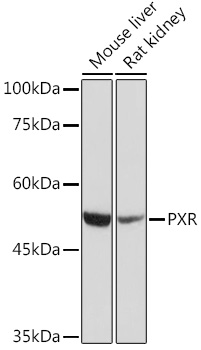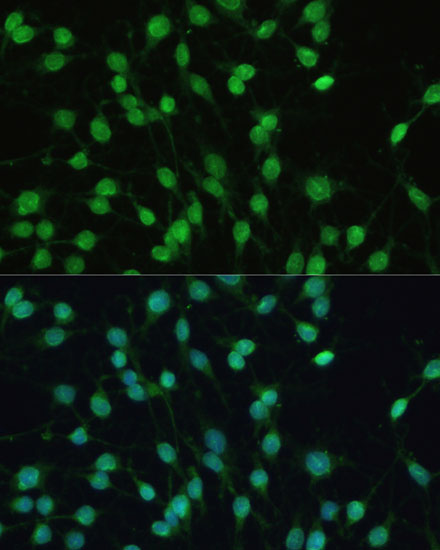| Synonyms: | NR1I2, BXR, ONR1, PAR, PAR1, PAR2, PARq, PRR, PXR, SAR, SXR |
| Background: | This gene product belongs to the nuclear receptor superfamily, members of which are transcription factors characterized by a ligand-binding domain and a DNA-binding domain. The encoded protein is a transcriptional regulator of the cytochrome P450 gene CYP3A4, binding to the response element of the CYP3A4 promoter as a heterodimer with the 9-cis retinoic acid receptor RXR. It is activated by a range of compounds that induce CYP3A4, including dexamethasone and rifampicin. Several alternatively spliced transcripts encoding different isoforms, some of which use non-AUG (CUG) translation initiation codon, have been described for this gene. Additional transcript variants exist, however, they have not been fully characterized. |
| UniProt Protein Function: | Nuclear receptor that binds and is activated by variety of endogenous and xenobiotic compounds. Transcription factor that activates the transcription of multiple genes involved in the metabolism and secretion of potentially harmful xenobiotics, drugs and endogenous compounds. Activated by the antibiotic rifampicin and various plant metabolites, such as hyperforin, guggulipid, colupulone, and isoflavones. Response to specific ligands is species-specific. Activated by naturally occurring steroids, such as pregnenolone and progesterone. Binds to a response element in the promoters of the CYP3A4 and ABCB1/MDR1 genes. |
| NCBI Summary: | This gene product belongs to the nuclear receptor superfamily, members of which are transcription factors characterized by a ligand-binding domain and a DNA-binding domain. The encoded protein is a transcriptional regulator of the cytochrome P450 gene CYP3A4, binding to the response element of the CYP3A4 promoter as a heterodimer with the 9-cis retinoic acid receptor RXR. It is activated by a range of compounds that induce CYP3A4, including dexamethasone and rifampicin. Several alternatively spliced transcripts encoding different isoforms, some of which use non-AUG (CUG) translation initiation codon, have been described for this gene. Additional transcript variants exist, however, they have not been fully characterized. [provided by RefSeq, Jul 2008] |
| UniProt Code: | O75469 |
| NCBI GenInfo Identifier: | 6093860 |
| NCBI Gene ID: | 8856 |
| NCBI Accession: | O75469.1 |
| UniProt Secondary Accession: | O75469,Q006P5, Q008C8, Q96AC7, Q9UJ22, Q9UJ23, Q9UJ24 Q9UJ25, Q9UJ26, Q9UJ27, Q9UNW4, |
| UniProt Related Accession: | O75469 |
| Molecular Weight: | 53,899 Da |
| NCBI Full Name: | Nuclear receptor subfamily 1 group I member 2 |
| NCBI Synonym Full Names: | nuclear receptor subfamily 1 group I member 2 |
| NCBI Official Symbol: | NR1I2 |
| NCBI Official Synonym Symbols: | BXR; PAR; PRR; PXR; SAR; SXR; ONR1; PAR1; PAR2; PARq |
| NCBI Protein Information: | nuclear receptor subfamily 1 group I member 2 |
| UniProt Protein Name: | Nuclear receptor subfamily 1 group I member 2 |
| UniProt Synonym Protein Names: | Orphan nuclear receptor PAR1; Orphan nuclear receptor PXR; Pregnane X receptor; Steroid and xenobiotic receptor; SXR |
| Protein Family: | Nuclear receptor subfamily |
| UniProt Gene Name: | NR1I2 |
| UniProt Entry Name: | NR1I2_HUMAN |








